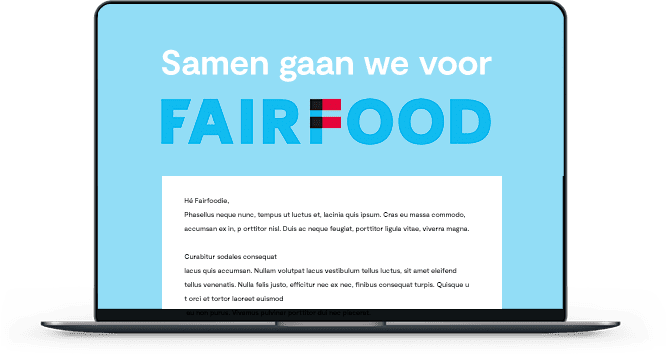Farmer of green: what barista training taught me about trends in the world of coffee
The scale indicates 18.7 grams. “Perfect.” says barista Stean. With a cappuccino, grams and seconds can make the difference between a top or total flop of a drink. If you grind the beans too coarsely, the hot water runs through them too quickly, leaving you with bitter coffee. If you have not met Stean yet; he imports coffee beans from Rwanda, is a WAKEcUPCALL ambassador and also enjoys teaching others how to prepare unbeatable cappuccinos and revealing trends in the world of coffee. This is where you find us, the campaign team, on this Tuesday afternoon—weighing coffee to the centigram. The only instructions we received before today was to “Bring three packs of milk with you to practice your latte art.”
Everything I have ever learned about the preparation of an Italian cappuccino in the hospitality industry had to be thrown out the window. I’ve made thousands of them, and it always went like this:
Step 1: Prepare a cup of dark black espresso, as syrupy as petroleum.
Step 2: Open the air valve as hard as possible, so that the regular café guests look up from their newspapers in annoyance. Then continue steaming the milk until you can hold the milk jug upside down without the foam spilling out.
Step 3: Build a foam tower on top of the coffee. The layers should mix as little as possible, because as my boss always said: “If a customer wants milky coffee, they will order black coffee.”
Step 4: Sprinkle a layer of, at the very least 2 millimeters, thick cocoa on the foam.
To my surprise, Stean made it crystal clear to me that that’s not how the baristas at this café would dare serve coffee to their customers.
To my surprise, Stean make it crystal clear to me that that’s not how the baristas at this café would dare serve coffee to their customers. Here the art of cappuccino making is much more refined; the milk is steamed just enough to make it shine, the milk jug is held at least ten centimeters above the cup (the more advanced the barista, the higher it is held) and poured in a strong radius straight into the center of the circle, then the spout is brought down to almost touch the top layer of coffee in the cup. To accomplish this artistic feat, one needs their hands to be 100% tremble-free. Finally, the jug is pushed forward at the same time the spout moves, so that you can create a unique piece of latte art.
Just as this artistic feat is hidden behind the scenes of the coffee world, so too are some uglier elements of this industry. Poverty is often also behind the scenes. Unfortunately issues like poverty come in and out of focus (sometimes people are talking about poverty and other times they are talking about the environment). In the 70s we bought solidarity coffee in linen bags at the Wereldwinkel. In the 90s you could make a statement with a cup of coffee with a Max Havelaar quality mark saying “I want the farmer to be able to survive on beans.”
At the moment, everything that is sustainable is hip & happening. Starbucks has the ‘Latte Levy’ which lets you pay 25 cents less if you fill your own mug with your Pumpkin Spice Flat Soya White instead of using a disposable cup. Speaking of throwing things away: coffee drab does not go into the trash can, as this can cause fungi to grow. Soon your choice will no longer be if you want your coffee with or without milk, but if you want it cyclical or CO2-neutral.
It seems as if the coffee farmer has ended up somewhere in the smallest corner of the sustainability concept.
This is all very good, but it seems as if the coffee farmer has ended up somewhere in the smallest corner of the sustainability concept. A while back I found myself at a coffee debate about sustainability. In a stern voice the debate leader warned the audience and speakers: “We are not talking about prices and incomes.” Of course no one liked that, because yes, a sustainable future of coffee starts with a fair price for the coffee farmer. It is not the case that coffee shops and large coffee roasters deny this, they simply do not know how to go about ensuring fair prices for the farmers. After all, these businesses are often busy addressing their own financial strains.
So let’s turn this around. I think it’s great to go all out on sustainability, from compostable nespresso cups to circular coffee mushrooms, as long as it attracts customers. But then we need to ensure that the green-coffee bonus ends up benefitting the farmers, so that they can invest in a more sustainable future. If it’s possible for me to make a latte art heart, it’s probably possible to invest in the future of these farmers.
P.S. You might have heard of our ambassador, Instock, the restaurant that cooks with supermarket food which would otherwise go to waste. They themselves say that “Unfortunately we cannot save coffee beans from the waste,” so they serve as honest coffee as possible. Would you like to taste their coffee? We can give away 5 x 2 coupons for a cup of coffee. Nice, right? Simply email lonneke@fairfood.nl.
Want to stay up to date with Lonneke’s work (and that of the rest of the Fairfood team)? Sign up for our newsletter. You’ll get a full update on what we’ve been up to once a month.
